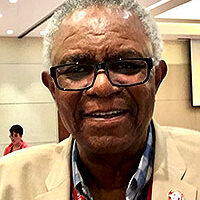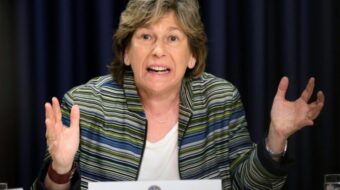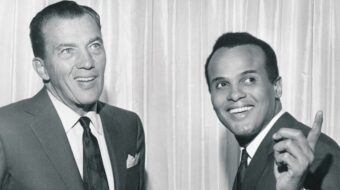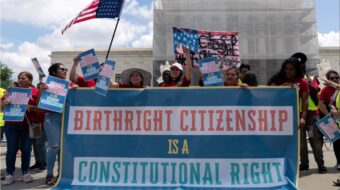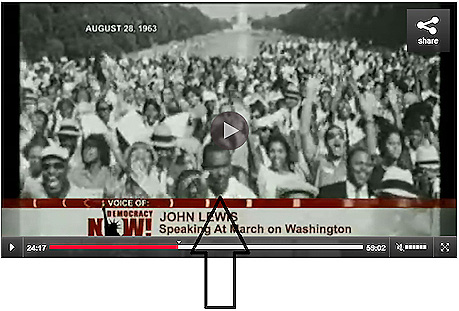
As one of 250,000 who attended the 1963 “March on Washington for Jobs and Freedom,” I had to come to Washington, Aug. 24, to be a part of the 50th anniversary march. The 1963 march had a big impact on me and was a big reason why I decided to dedicate my life to the struggle for freedom and socialism.
Fifty years ago, I was active in an interracial socialist youth organization and was a new member of the Communist Party in Eastern Pennsylvania. Our youth organization, Socialist Youth Union, had a modest headquarters in a mixed working-class community in North Philadelphia. After the march was announced, we decided to organize to bring as many young people from the community as we could.
We organized street corner meetings in the neighborhood to inform people of the courageous fights against Jim Crow going on, especially in the South, and how people were demanding their rights and were being harassed, arrested, brutalized and murdered for fighting for the elementary right to vote. We signed people up from the neighborhood for seats on the bus. We were surprised and so happy at the crowds we drew at our street meetings. Ultimately, we filled three buses of mainly black and white youth to go to the Washington march.
We arrived in Washington early and found a place right up front by the stage. We listened to all the great speeches – including the Rev. Dr. Martin Luther King Jr.’s historic “I Have a Dream” speech – and to all the great music.
I was so impressed at size of the racially mixed crowd and how warm and friendly everybody was. This was a march that was supposed to be violent and unruly, but it turned out to be peaceful, and up to then, the largest gathering in history in the nation’s capital.
Most of us had never seen so many people in one place at one time. That it was about ending racism, for unity and economic justice was so inspiring. As a young worker, I was especially proud that my union was there with members coming from all over the country.
I also was saddened by the announcement from the stage that the great W.E.B. Du Bois had passed away in Ghana. You could hear a pin drop.
With so many people there, it made you feel that we were part of something big and we must continue the struggle. It was not the slogan then but we felt kind of like the 99 percent: a new majority for real freedom.
The button from the march became a basic part of my wardrobe for months afterwards.
The 1963 march was a turning point moment for millions and forced the Kennedy and Johnson administrations to push for civil rights. Eventually Congress was forced to pass the most important civil rights legislative package of our time.
That was 50 years ago.
I thought the 50th anniversary march to ” Advance the Dream” was also a turning point in light of today’s political realities. It set the stage for advancing the fight for freedom. I was so moved by all the talk about the “New Jim Crow.” The book, “The New Jim Crow: Mass Incarceration in the Age of Colorblindness,” by Michele Alexander defines the human rights issues of today. It is a great book that exposes the new racism coming from the 1 percent and being spearheaded by the extreme right Republicans. They aim to turn back the clock when it comes to racism and cover up the systemic and structural nature of oppression and exploitation for profit and power.
This march united a multi-racial coalition of labor unions and people’s organizations; a coalition that came from the voting booth last November and is now in the streets and courts, pressing for justice on many fronts, starting with justice for Trayvon Martin and all victims of racist violence. They are fighting against voter suppression and racist laws like “Stand Your Ground” and police practices like “stop-and-frisk.” They are demanding immigrant rights and a pathway to citizenship. They want jobs, and decent schools that really educate, decent housing and health care for all with the lack of those things are at the root of gun violence in impoverished communities of color. They want to tax the rich and organize low-wage, fast food workers. They want higher minimum wage and the right to organize unions. They are pushing for marriage equality and an end to the war on women. They are fighting against “fracking” and U.S. military intervention, including drones.
The marches and local activities to commemorate the 50th anniversary were successful events but they must be seen as launching pads for united action on the issues and concerns.
All of these diverse movements are building unity and cooperation with each other. Given some of the shortcomings, of both marches, they brought people together and called for united action including the 2014 elections.
There is much work to be done.
Even with all attempts over the past 50 years to split and disrupt the movement, the struggle continues and has moved to a higher level.
To still be in the struggle and the Communist Party for more than a half century is a great source of personal pride. I had a hand in the collective effort to bend that long arc of humanity towards social justice.
Photo: This screenshot from a Democracy Now broadcast shows the crowd at the 1963 March on Washington; at center above arrow pointing up is Jarvis Tyner. (Via Tyner family)


